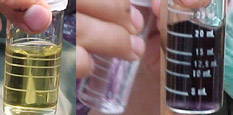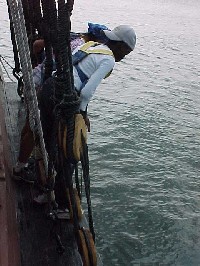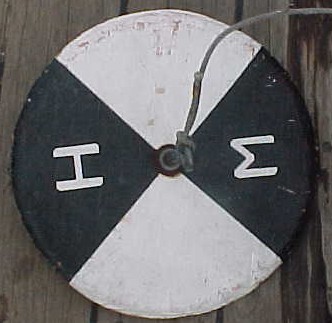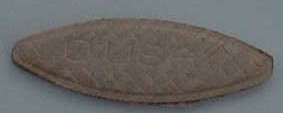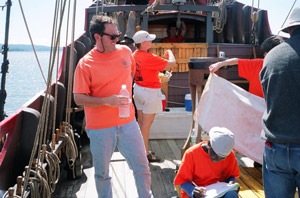
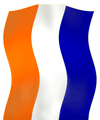
Learning Page
Shipcraft..River Science (page one) (page two). Presentations
We spent some of our voyage studying the river's currents, salinity, and animals. Some of the tools we used were also available to Henry Hudson's sailors, but others were more modern.
|
Salinity
|
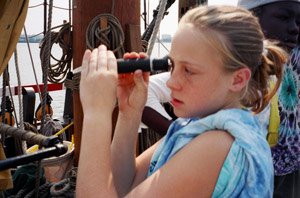
(Above) Using a refractometer to measure salinity. (left) A titration in process. Titration can be used to measure salinity or dissolved oxygen. (below) Comparing results obtained by the two methods. |
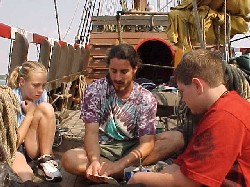 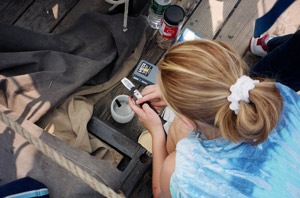 |
|
|
|
Water Clarity |
|
Current Speed (below) Chris would toss this wood chip into the water, and time its passage between two fixed points on the ship. He could then calculate the speed (of either the current flowing by the ship, or the ship's speed through the water).
|
Mr. Linehan works with Keionna on her study of current speed. |
